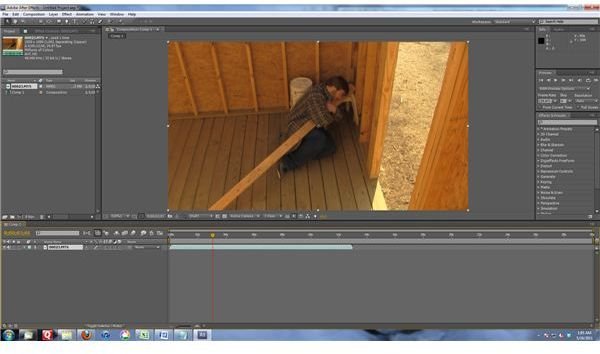What is the Post-Production Process? Capturing & File Management
The digital revolution has changed the post-production process immensely and has opened up new alternatives and changed the order of the entire post-production process. Never before has editing film or video been less time consuming, more affordable, and less cumbersome.
Most major film studios shoot footage using film cameras and then edit the footage with a computer, a process called Telecine. After the raw film is processed and developed, it’s digitized (scanned into digital bits) and captured into an editing software system, such as Final Cut Pro or Avid. With video, the process is simpler and quicker and is simply captured into the editing system from the tape or device in which it was initially recorded on.
Capturing and File Management
Whether the footage is from film or video, capturing footage into a computer is the first stage of the post-production process. Because audio may be captured independently from video, the process for capturing and file management varies. The audio is synced to the images for editing. It is wise to keep video and audio labeled and organized accordingly, both during principal photography and during post-production.
During production, create an ordered list of each take and shot of the video and audio, by recording the timecodes. Time referencing aids in editing, synchronization and identification of the files. Above all else, organization and file management will help you later.
During post-production, digitized images are labeled accordingly, marking timecodes and reel numbers for easy access. Plus, sound files, such as foley effects or music, should be labeled for easy access. Once the footage is captured, labeled, and stored in the right folders, the editing process begins.
Editing
The first stage of the editing process is known as the rough cut. The rough cut consists of images taken from the best shots from each scene, all arranged in consecutive order, with a coherent timeline based on the narrative. The shots may include master shots, medium shots, and close ups based on the shot list. The rough cut is usually much lengthier than the final cut, but serves as a sketch as to how the narrative will flow.
The next stage is known as the fine cut. During this stage, the editor goes back and trims each scene by seconds or even just frames. The fine cut should flow seamlessly, between images or shots. After this stage and after the director has approved the final cut, the video is locked, meaning no more changes are made and it is ready to move to the sound editor, foley artist(s) and music composer.
After the film is locked, an edit decision list (aka EDL) is created. The EDL may either be a text document or generated by the editing software itself and is used as a reference to the image’s source.
Sound
Once the image is completed, the supervising sound editor oversees the process of mastering of the sound. Besides sound clips being synced with the images, this is also the stage when, if any audio problems occurred during production, actors are called in for voice recordings in a studio, a process known as automated dialogue replacement (ADR). This is also the stage when foley artist or sound effects from a sound effects library is mixed. Then, background and location noise is added. If any needed, sound filters, such as audio compressors, are added to any of the audio files.
After all the audio files have been independently mastered, the dialogue, sound effects, and background/location noise are placed on separate tracks: one for dialogue and the other for sound effects and/or background noise.
Next, the music composer writes and composes the soundtrack. This is a different crew altogether and often times is a different studio. The musical soundtrack is recorded and stored on a separate track apart from the other audio tracks. This is so that the dialogue may be dubbed into different languages for international distribution, without interfering with the music soundtrack.
Visual Effects

If any visual effects are needed, such as computer generated imagery, a visual effects artist or visual effects studio is hired for this step. This step may be performed independently or once the film is edited, depending on the effects needed. Visual effects are not only a post-production procedure or technique, they must be well planned before principal photography begins and are considered during principal photography.
Color correcting is also a time consuming process which may take several steps until each shot is consistent. Color grading, also known as color correction, is a technique that ensures the color and brightness of the film is consistent throughout the entire project. With film today, this process may be completed by professionals called colorists, either just before the raw footage is digitized or digitally on a computer.
References
Personal experience of author
All images from author’s personal collection
